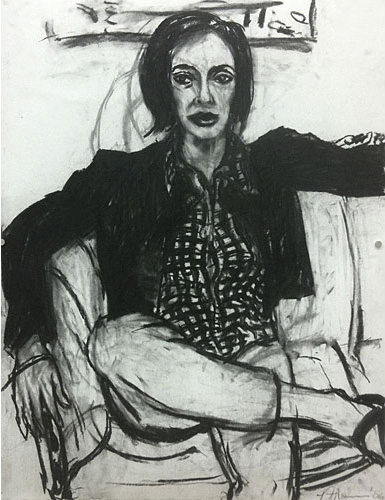![]()
CURATOR’S STATEMENT
Stephanie Sanchez, 2010
Artists in this exhibit have one thing in common: they draw the human figure from life and have made this a practice over many years. Some are life drawing educators; the drawings are demonstrations done for students in an art studio, which explains why some appear battered, pin holes showing, not signed or dated. They are the visual equivalent of a lecture in an anatomy or history course; upon viewing the drawing the class might focus upon construction of a foot and try to apply that to the model in front of them. Another category in this show is life studies which may be used in paintings later on. Portraits of friends, models and family flesh out the exhibit. These may have been done at home, or in an informal studio setting. The drawings may be ends unto themselves. The artists may have simply started a drawing because the opportunity presented itself, or someone may have been persuaded to sit patiently.
The study and interpretation of the human form is a necessary basis for illustration, fine art practice, graphic design, architecture, and fashion. Artists such as Wayne Thiebaud, noted figurative artist, participated in legendary life drawing sessions in the Bay Area starting in the 1980’s. Charles Garabedian and Richard Diebenkorn, noted abstractionists or non figurative painters were committed students of the practice of life drawing. There is something about the process of life drawing which artists have found invaluable, utterly compelling and necessary over the centuries.
Some drawings in this show are described as “gestures”, looking unfinished, yet that is the point. They are intuitive responses to a moving, breathing human figure, and demonstrate a quick but knowing summary of the movement or the momentary pose. Some drawings indicate longer studies requiring hours of still poses from the model. Others vary in size from small pocket sketches, to standard 18 x 24 inch and larger detailed, but naturalistic interpretations of a model.
Life drawings, ideally, communicate a life like energy...keeping the “life” in life drawing. Beginners struggle to find correct proportion of the figure, learn to tackle the more difficult parts of the body such as hands and feet and heads. Conveying volume and energy through line, conveying “fullness of form” are universal goals. These are some of the key issues every drawing student grapples with. And I hasten to add, we, the educators and artists, never stop being students of drawing when it comes to the human figure.